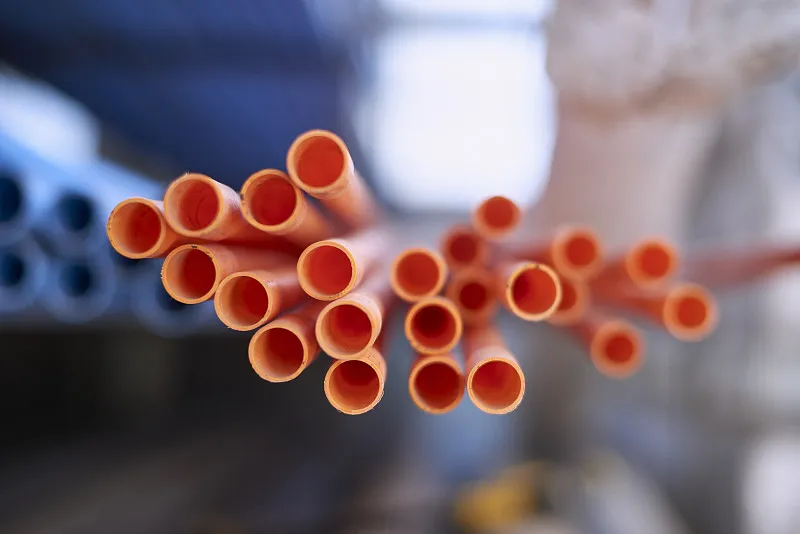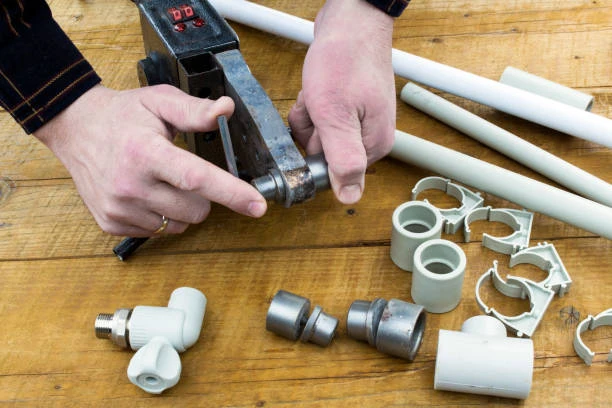Introduce PPR Pipe
PPR (Polypropylene Random Copolymer) pipe fittings have become increasingly popular in plumbing systems due to their versatility, durability, and resistance to corrosion. This article will explore the main uses of PPR Pipe fittings, providing insights into their applications across various sectors, and highlighting why they are an essential choice in modern plumbing.
Understanding PPR Pipe Fittings
PPR pipe fittings are components designed to connect sections of PPR pipes, ensuring a secure and leak-proof system. They come in various shapes, including elbows, tees, couplings, reducers, and valves, each serving specific purposes in a plumbing network. PPR fittings are manufactured from high-quality polypropylene, which contributes to their strength and resilience.
Key Characteristics of PPR Pipe Fittings
Before diving into their uses, it’s essential to understand the key characteristics of PPR pipe fittings:
- Durability: PPR fittings can withstand high temperatures and pressures, making them suitable for long-term use.
- Corrosion Resistance: Unlike metal fittings, PPR does not rust or corrode, ensuring the longevity of the plumbing system.
- Lightweight: PPR fittings are lighter than traditional materials, simplifying transportation and installation.
- Ease of Installation: These fittings are typically joined using heat fusion, creating strong, leak-free connections without the need for adhesives.
- Chemical Resistance: PPR fittings can handle various chemicals, making them ideal for industrial applications.
Main Uses of PPR Pipe Fittings
PPR pipe fittings find application in various sectors due to their advantageous properties. Here are the main uses:
1. Residential PPR Pipe Plumbing
One of the most common uses of PPR pipe fittings is in residential plumbing systems. They are extensively used for:
- Hot and Cold Water Supply: PPR fittings effectively connect pipes in both hot and cold water systems, ensuring reliable water flow throughout the home.
- Drinking Water Systems: Due to their non-toxic nature, PPR fittings are safe for use in drinking water applications.
- Bathroom and Kitchen Installations: PPR fittings are used to connect fixtures such as sinks, showers, and toilets, providing an efficient plumbing solution.
2. Commercial PPR Pipe Plumbing
In commercial buildings, PPR pipe fittings are equally beneficial. Their applications include:
- Office Buildings: PPR fittings are used in the water supply systems of office buildings, providing consistent water pressure and reliability.
- Restaurants and Cafes: These fittings are essential for kitchen plumbing, connecting various appliances and ensuring proper drainage.
- Hotels: PPR fittings are used throughout hotel plumbing systems for guest bathrooms, kitchens, and laundry facilities, ensuring efficient operation.
3. Industrial PPR Pipe Applications
PPR pipe fittings are increasingly utilized in various industrial sectors. Their applications include:
- Chemical Processing: Due to their chemical resistance, PPR fittings are ideal for connecting pipes in chemical processing plants, where exposure to harsh substances is common.
- Manufacturing Facilities: In manufacturing environments, PPR fittings can be used for transporting water, chemicals, and other fluids.
- Wastewater Treatment: PPR fittings are employed in wastewater treatment facilities for their durability and resistance to corrosion.
4. Irrigation Systems
In agriculture, PPR pipe fittings play a crucial role in irrigation systems:
- Drip Irrigation: PPR fittings are used to connect drip irrigation lines, ensuring efficient water delivery to crops while minimizing water loss.
- Sprinkler Systems: They facilitate the connection of pipes in sprinkler systems, helping to maintain optimal moisture levels in fields.
5. Heating Systems
PPR fittings are also utilized in various heating applications:
- Underfloor Heating: PPR pipes and fittings are ideal for underfloor heating systems due to their ability to withstand high temperatures and provide efficient heat distribution.
- Radiator Systems: These fittings can connect piping systems for radiators, ensuring reliable heat supply in residential and commercial buildings.
6. Fire Protection Systems
PPR pipe fittings can be utilized in fire protection systems:
- Sprinkler Systems: They are effective in connecting pipes in fire sprinkler systems, ensuring rapid water delivery during emergencies.
- Fire Hydrant Connections: PPR fittings can also be use in the infrastructure connecting fire hydrants to the water supply.
7. Aquaculture and Water Treatment
PPR fittings are increasingly use in aquaculture and water treatment applications:
- Aquaculture: They help transport water in fish farming systems, ensuring optimal conditions for aquatic life.
- Water Filtration: In water treatment facilities, PPR fittings are use to connect filtration systems, maintaining efficient operation.

Installation of PPR Pipe Fittings
The installation of PPR pipe fittings is straightforward and involves the following steps:
1: Gather Tools and Materials
Before beginning the installation, ensure you have the following tools:
- PPR pipes and fittings
- Pipe cutter
- Heat fusion tool
- Measuring tape
- Safety goggles and gloves
2: Prepare the PPR Pipe
- Measure and Cut: Use a pipe cutter to cut the PPR pipe to the required length, ensuring the cut is straight.
- Deburr the Edges: Smooth any rough edges on the cut pipe using a deburring tool to prevent damage to the fitting.
3: Heat Fusion Joining
- Heat the Pipe and Fitting: Use the heat fusion tool to heat both the end of the pipe and the inside of the fitting socket until they reach the appropriate temperature.
- Join the Pipe and Fitting: Quickly insert the heated pipe into the fitting socket, ensuring a tight connection.
- Hold in Place: Maintain pressure on the joint for a few seconds to ensure a strong bond forms.
4: Cooling and Testing
- Allow to Cool: Let the joint cool completely before applying any pressure.
- Pressure Test: Conduct a pressure test to check for leaks and ensure all connections are secure.
Maintenance of PPR Pipe Systems
While PPR pipes systems are low maintenance, regular checks can help ensure optimal performance:
Regular Inspections
- Visual Checks: Inspect for signs of wear, leaks, or damage, especially around joints and fittings.
- Monitor Pressure: Check for any significant changes in pressure that could indicate leaks or blockages.
Cleaning
- Flush the System: Periodically flush the pipes to remove debris and buildup that could affect flow.
- Chemical Cleaning: In industrial settings, use compatible cleaning agents to maintain pipe integrity.
Prompt Repairs
- Address Issues Immediately: If leaks or damage are detecte, promptly repair or replace affected fittings to maintain system integrity.
Conclusion
PPR pipes fittings offer numerous advantages and applications, making them a vital component in modern plumbing systems. Their durability, ease of installation, and resistance to corrosion enable them to serve effectively in various settings, from residential homes to industrial facilities. By understanding their uses and benefits, professionals and homeowners alike can make informed decisions regarding their plumbing needs.
FAQs PPR Pipe
- What are the main applications of PPR pipes fittings? PPR pipe fittings are use in residential plumbing, commercial plumbing, industrial applications, irrigation systems, heating systems, fire protection systems, and aquaculture.
- How long do PPR fittings last? With proper installation and maintenance, PPR fittings can last over 50 years.
- Can PPR fittings handle hot water? Yes, PPR fittings are suitable for both hot and cold water applications, making them ideal for various plumbing systems.
- What tools are required for installing PPR pipes fittings? Essential tools include a pipe cutter, heat fusion tool, measuring tape, and deburring tool.
- Are PPR fittings environmentally friendly? Yes, PPR fittings are 100% recyclable, making them an eco-friendly option for plumbing solutions.


















